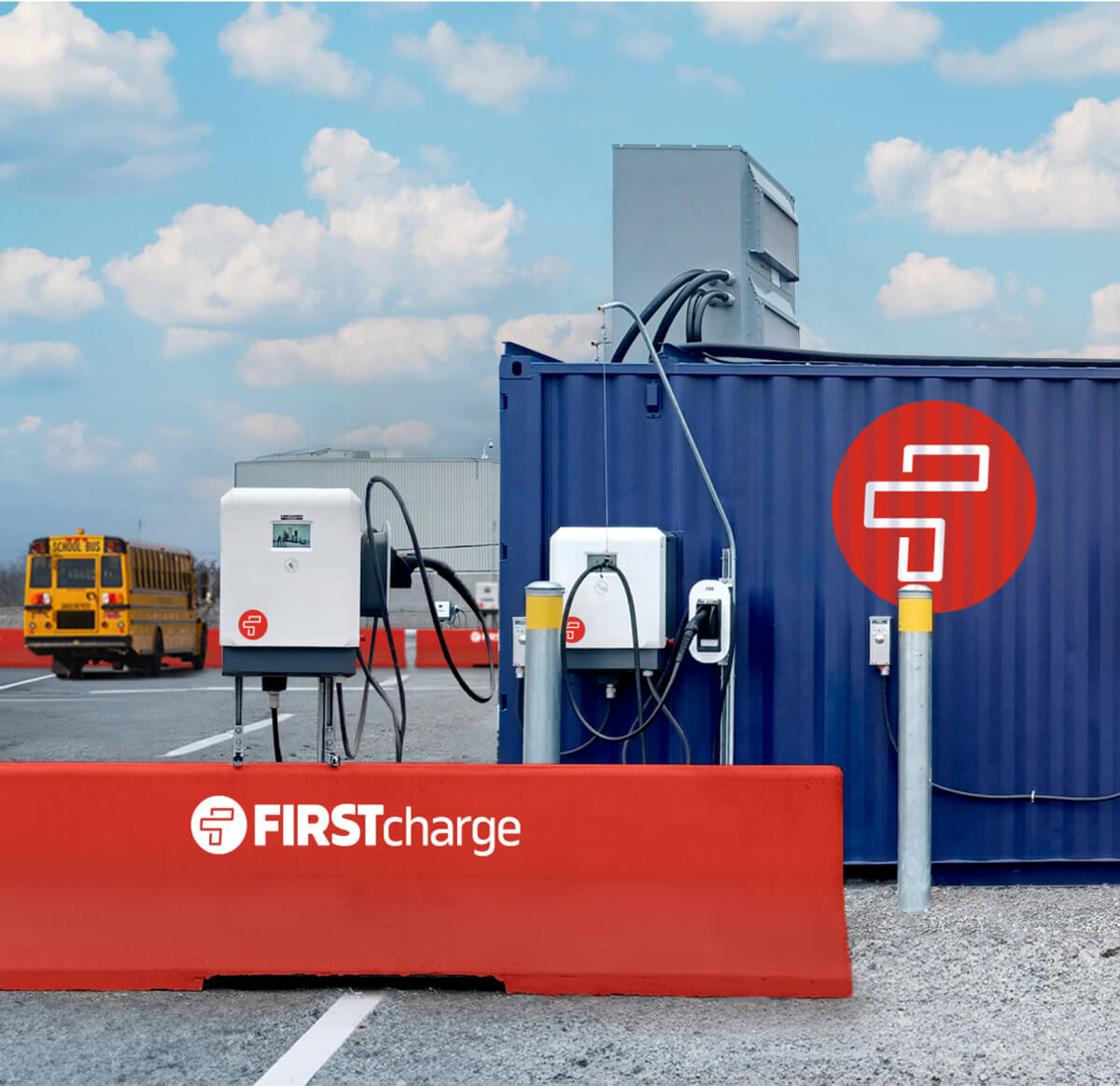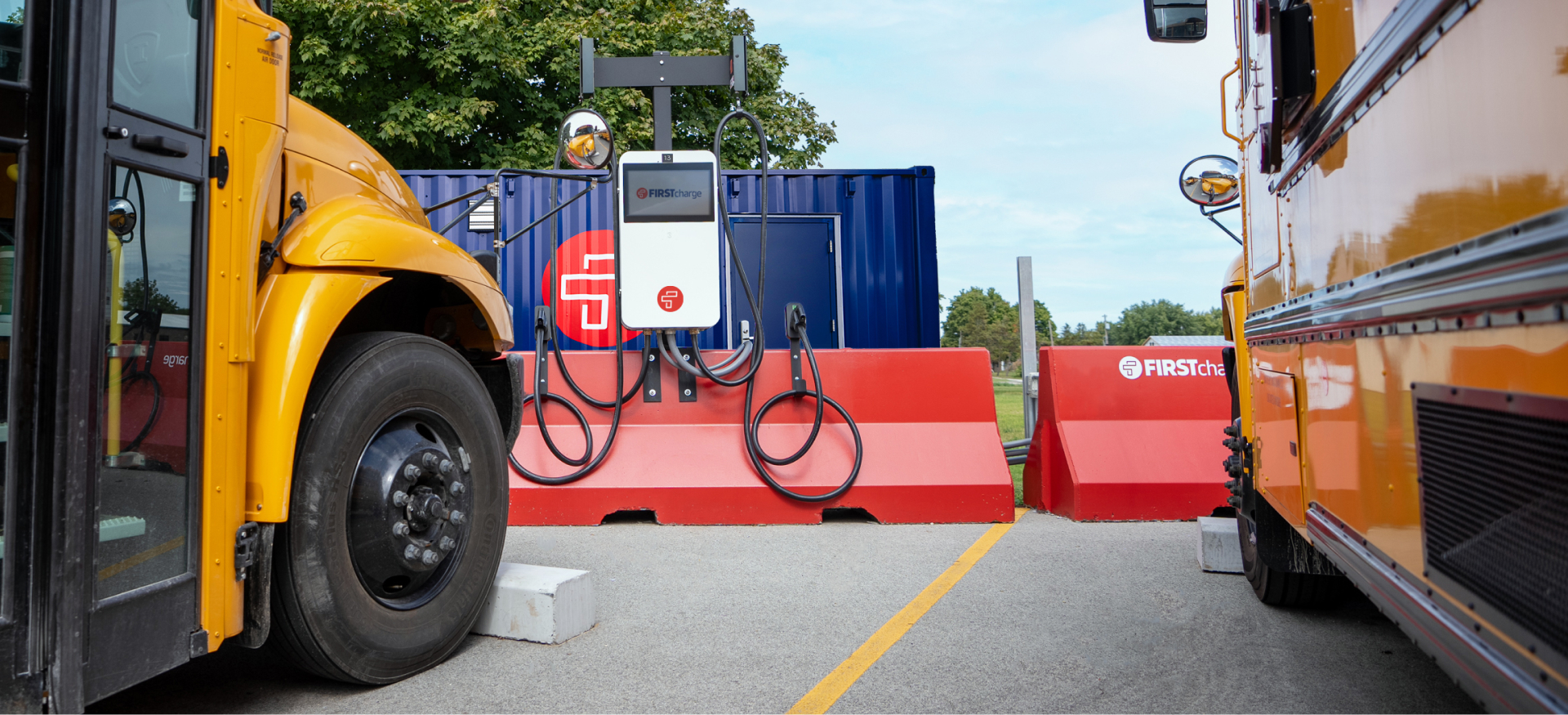The leader in fleet electrification
Driving the transition to cleaner, greener transportation.
CONTACT USElectrification ready
No one has more electric buses on the road or EV miles driven than First Student. While many companies talk about their future plans, we’re breaking ground in the electric school bus industry.
#1
Most electric buses deployed in North America
7.7 Million
Miles driven in electric buses
$596 Million
Secured for our customers in EPA funding since 2023
Your partner in sustainable solutions
First Student’s leadership and experience in bus electrification helps school districts make the most informed decision when pursuing and achieving sustainable energy objectives. Our team will work with you to understand your specific goals, needs, and constraints before evaluating and presenting potential solutions. First Student spearheads simplified electrification efforts, revolutionizing the transportation industry with innovative, sustainable solutions for all districts.
- 1 Identify and capture all incentives
- 2 Determine feasibility and perform geographic analysis
- 3 Optimize routing to accommodate electric buses
- 4 Work with utility to assess power
- 5 Select school bus type and charger
- 6 Design and install infrastructure
- 7 Manage total operations

Flexibility to meet your EV charging needs
Meet First Charge, a patent-pending, modular, and scalable charging infrastructure solution designed by operators, for all operators. First Charge is an above-ground charging infrastructure solution that reduces costs by alleviating the need for traditional construction methods of digging and trenching.
Learn more about First Charge today.
Fleet electrification consulting
As the owner and operator of the largest electric school bus fleet in North America, we have the knowledge and expertise to provide a strategic plan that best fits your needs. Our EV team offers customized service solutions to review your district’s current transportation operation and provide you with world-class analysis and expert recommendations to electrify your fleet.

Advantages & impact of EV school buses
Fiscal responsibility
Health benefits
Environmental justice
Operational efficiencies
Government compliance
Community support
Most common questions answered
We recommend that you do work with someone with experience. If you currently are not a First Student customer, First Services can assist you through this journey to bring electric school buses to your fleet. There are several issues you’ll need to take a look at in order to make sure you order the appropriate bus with the appropriate battery size and the size of charger you need in order to meet your route needs.
You should also be reaching out to your utility first. You need to understand what power they can bring to the location you decided to put these buses, because that can lead to additional cost or additional time. First Services can help you map a process forward so that you can start an electric school bus fleet with your school.
It’s difficult to provide general or average costs, because every situation is very different and everyone has a different relationship with their manufacturer or dealer or charging company in terms of what they can obtain buses and charging infrastructure. For buses, type C and Type D units range around $375,000 per bus. For charging infrastructure, this varies greatly because sometimes the utility will cover significant amounts of the charging infrastructure, but in some cases, you’re left with paying for everything. If you have a utility with a make-ready program, you may be limited to only having to buy the charging station, which can be as low as $15,000 per unit.
However, if you’re having to pay for the upgrades of the infrastructure on your side of the meter and the utility side of the meter, that can push your charging infrastructure cost up to well over $60,000 per bus. Speak with your utility and understand what they’ll cover so that you understand what your potential costs might be in the long run.
Everybody should understand what they’re dealing with when it comes to operational needs and how weather impacts electric school buses. Our Quebec fleet is using Lion type C school buses with 132 kilowatt-hour battery packs. Those are the ones that are producing in the 80-to-90-mile range for us. As we begin to drop down to lower temperatures, well below freezing, even below zero in Quebec, we see that range drop down to 70 miles.
Most school bus manufacturers now are offering battery packs in the range of 155 kilowatt hours to 220 kilowatt- hour packs. We are beginning to see much greater ranges out of those buses. But you still need to take into account the mileage driven and the temperatures because that will impact the performance. You should be able to easily achieve 100 to 120 miles out of these 220 kilowatt-hour battery packs. Even on cold weather days, you shouldn’t be dropping much below 100 miles on a single charge.
This is what we all want to work toward. We think this is what the Clean School Bus Program and other funding programs will do to reduce the cost of school buses so that we can reach total cost of ownership parity with fossil fuel units. Our analysis tends to indicate that by 2029, we should be seeing parity cost. What that means is the bus will probably cost more than your traditional diesel unit, but your total cost of ownership will be the same as a diesel unit or potentially lower.
The maintenance of electric school buses should be a net positive for all who bring them in to their fleets. We are seeing a significant reduction in maintenance for electric school buses. We all know there are no fluids to be dealt with. Brake issues are few and far between. There are fewer moving parts, so you should see a significant reduction in the maintenance, not only in the cost but in the time that you need dedicated to it. That is one of the reasons we view electric as the future of student transportation. It is an easier bus to maintain, and an easier bus to operate that will bring benefits to all who bring them into their fleet.
At this point, the traditional diesel mechanic will have to have some new training, First and foremost, they have to have new personal protection equipment that they will need to wear when working on high voltage systems. What we recommend for those who are bringing electric school buses into their fleet is work with their manufacturer and/or dealer who is providing that initial training to school districts that have maintenance staff that will be working on these.
It’s critical because each bus has its own approach to how maintenance should be done. Most of the issues are still typical school bus issues, but when dealing with a high voltage system, it does require specialized training and specialized equipment in order to maintain. However, most bus manufacturers and dealers are providing service for at least a year on the maintenance, and so you will have time to assist in that transition and get your staff trained to how they need to be in order to work on the buses.
You should also include cross-training your mechanics to work on the charging infrastructure as well. Again, when installed, those who install and produce the charging stations will offer training. This equips your staff to be well trained on those so they can have the ability to keep the charging infrastructure working and functioning.
One of the biggest changes we may see on the maintenance side is the need to raise the bus up on a lift in order to get to the battery packs and remove them. So therefore, yes, you are looking at potentially having to have a higher ceiling in order to lift the bus up. This is something we’re continuing to explore at this time to see what solutions might be out there, and we hope will be some more coming along.
In the news
